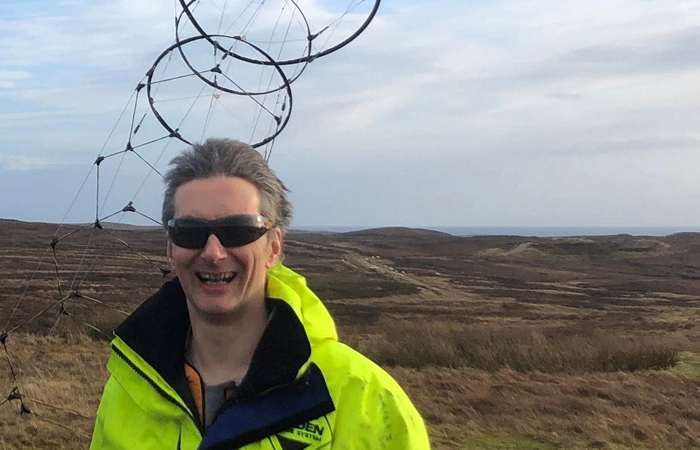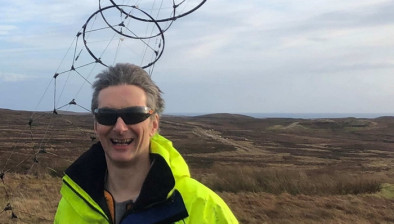Windswept and Interesting Ltd secures £40,000 from HIE
Rod Read, a Lewis man who recently moved to Shetland and set up Windswept and Interesting Ltd, has been awarded £40,000 from Highlands and Islands Enterprise (HIE) to help make kite energy a reality.

Rod Read
Mr Read set up Windswept and Interesting Ltd in 2012 when he started developing kite turbines. The lightweight airborne wind energy system was originally aimed at eco travellers, electric vehicles and the agricultural industry.
Generating power through kites is a relatively new concept but one that is now gathering global interest as a scalable carbon-neutral power option for the future. His innovative turbine system uses wind to lift a kite high in the air and connects to the hoops of a rotary kite, which turns a ground-based generator to produce power.
Mr Read has already produced prototypes and is now increasing the scale and scope from one that produces 1.5kW to a 10kW improved version of the concept. He has been working with research partners and academia including the University of Strathclyde to develop the system. More recently, he secured £40,000 from HIE for the £190,000 first phase of the project.
The funding will allow Mr Read to build on this research and development and focus on planning for modelling, design, testing and data capturing. It is expected that two jobs will be created over the next three years.
Mr Read is keen to test the boundaries of the kite turbines in Shetland’s strong wind speeds and once the initial work is done, hopes to have funding in place to perform the phase two prototyping. After that, he hopes to be in a good position to start production or go even larger.
The business is one of around 40 companies worldwide dedicated to kite energy. Rod’s kite turbine can easily fit into a small electric vehicle and can also be used to charge the car, enabling it to be energy independent. A portable low-cost kite wind turbine could appeal to crofters, eco travellers, campers and farm workers.
Shetland provides room for Rod to expand his kite turbines using a larger testing area. Plans are being developed to use parts of Scatsta Airport, which closed to flights in 2019, for testing the kite turbine’s electricity production and economic potential.
John MacKenzie, senior development manager at HIE, said: “This is a really exciting project and one that could potentially benefit remote communities and create more jobs in our region. The innovative energy system is low-cost and uses less carbon than other renewable energy options. The mechanisms behind kite turbines are new and the system is an emerging technology, which could make the Highlands and Islands a leader in this new field of technology.”
Mr Read and his family moved to Shetland last year after his wife, Kirsty became the new medical director in Shetland. He said: “The whole idea with kite power is about making lightweight and scalable systems, which can fly in stronger winds at higher altitudes. The operational capacity of kite turbines to scale is not yet known, which is the biggest research and development challenge faced in bringing the product to market and this is what this project aims to address.
“Shetland offers a fantastic opportunity to prove durability and reliability in higher wind speeds. We are really pleased with the funding we have received from HIE to support our project.”
The company was successful in securing Shell’s Gamechanger funding and has also been awarded funding from Shetland Islands Council.








